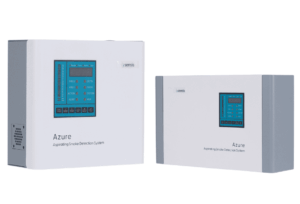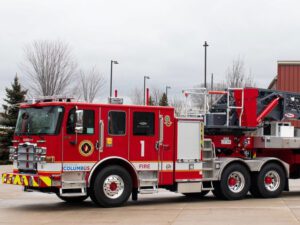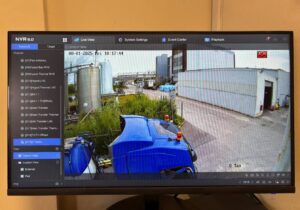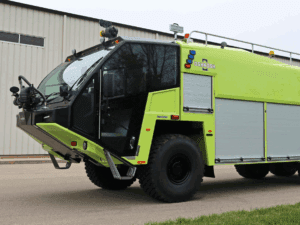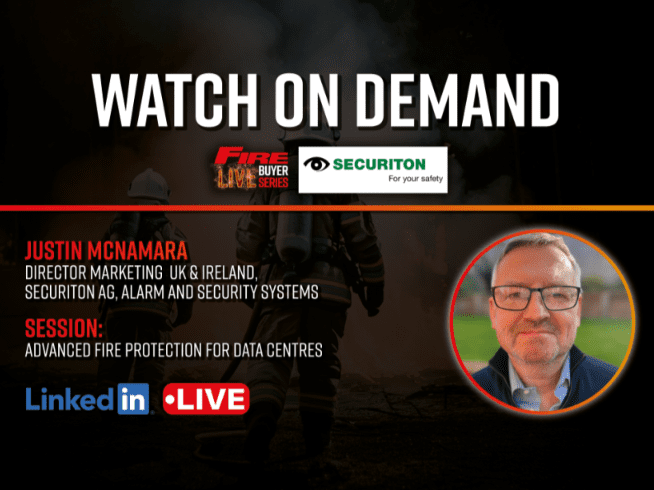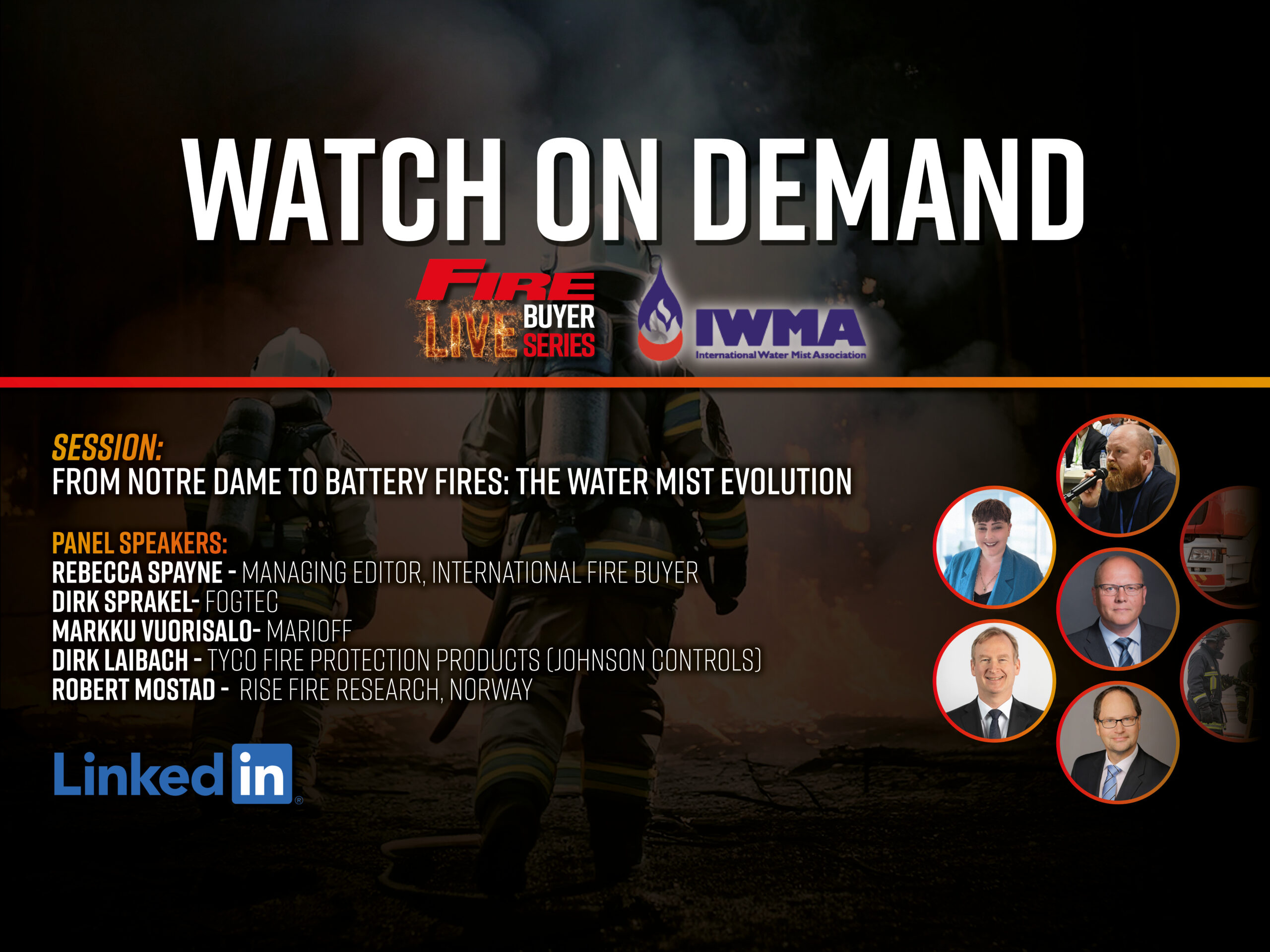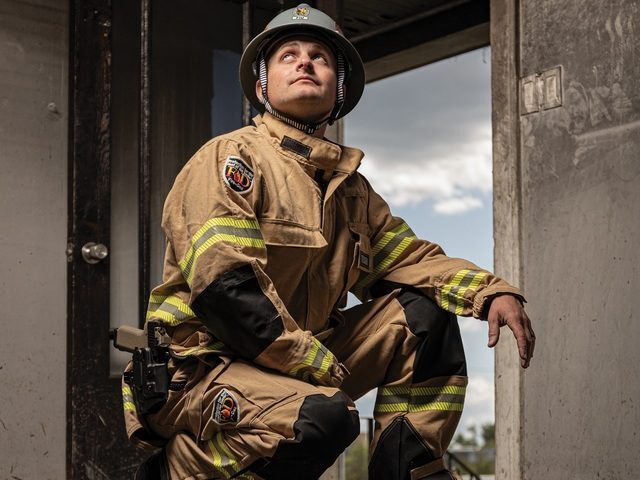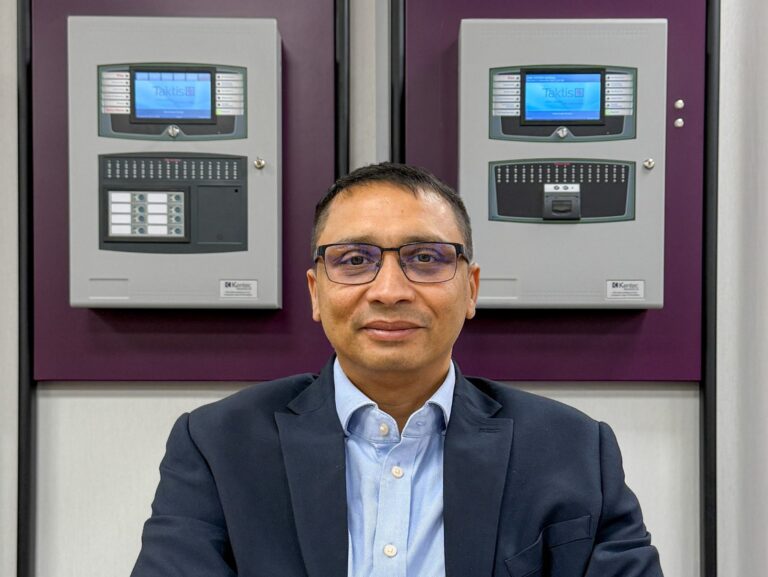Rebecca Spayne of Fire Buyer sits down with Chris Downing, Global Director of Fire Codes & Standards at Johnson Controls, to discuss tailored fire protection strategies for data centres.
Data centres are unique, high-value environments where downtime can have huge consequences. How do fire protection systems support both operational continuity and efficiency in this sector?
There’s a misconception about what a “data centre” is. People often picture hyperscale facilities run by the big cloud providers, but data can be anything from a single server cupboard in a small office to an enterprise-owned facility on a company’s premises. In fact, around 45% of data centres are still enterprise-owned rather than co-located or hyperscale. Regardless of scale, these are critical environments, if they stop running, the business stops running.
At their core, data centres are large electrical loads that convert power into processing, and in doing so, generate significant heat. Traditionally, we’ve managed this with forced air cooling, but airflow patterns in modern facilities have become more sophisticated to improve efficiency. That changes the way smoke behaves, as it no longer rises as predictably but can disperse rapidly, which makes both detection and protection more challenging.
Emerging cooling methods like rear-door, cold plate (direct-to-chip) or immersion cooling will add further complexity; though they won’t replace existing systems overnight they will likely creep into the same protected space.
Fire protection in these environments has to achieve two things: it must detect and act upon a fire before it causes damage, and often must do so without creating unacceptable downtime. That means being future-proof and flexible enough to adapt to evolving cooling methods and layouts. It’s not enough to simply replicate what worked in the past; protection strategies must be designed for the airflow, cooling, and operational profile of the specific site.
What’s the right starting point when designing fire protection for a data centre?
Before talking about technologies, a data centre client needs to be honest about their risk tolerance. Picture three rows of racks in a single room. If one catches fire, what does the client expect to happen? In some parts of the world, such as the United States, the code may require sprinklers as a minimum, without them, you simply can’t operate. In other regions, sprinklers might not be mandated at all.
The key question is whether a sprinkler system alone is good enough? In my view, not if you want true operational continuity. Data centre racks tend to act like umbrellas, water won’t easily penetrate, so you have to assume a total loss of any rack that ignites, and potentially that whole contiguous row. Sprinklers should control the spread to other rows, but they won’t prevent the loss of equipment in the one that’s burning. For some operators with extensive redundancy, that may be acceptable. For others, it could be a non-starter.
If the goal is to keep the power on and the business running even during an incident, a gaseous extinguishing system is often the right choice. Unlike sprinklers, gaseous systems can extinguish a fire inside a rack without needing the power cut, preventing both damage and downtime. That’s why, for mission-critical environments, I always start by asking: can you afford to turn the power off? If the answer is no, sprinklers alone probably aren’t the right answer.
To read the full article see our latest issue here.


